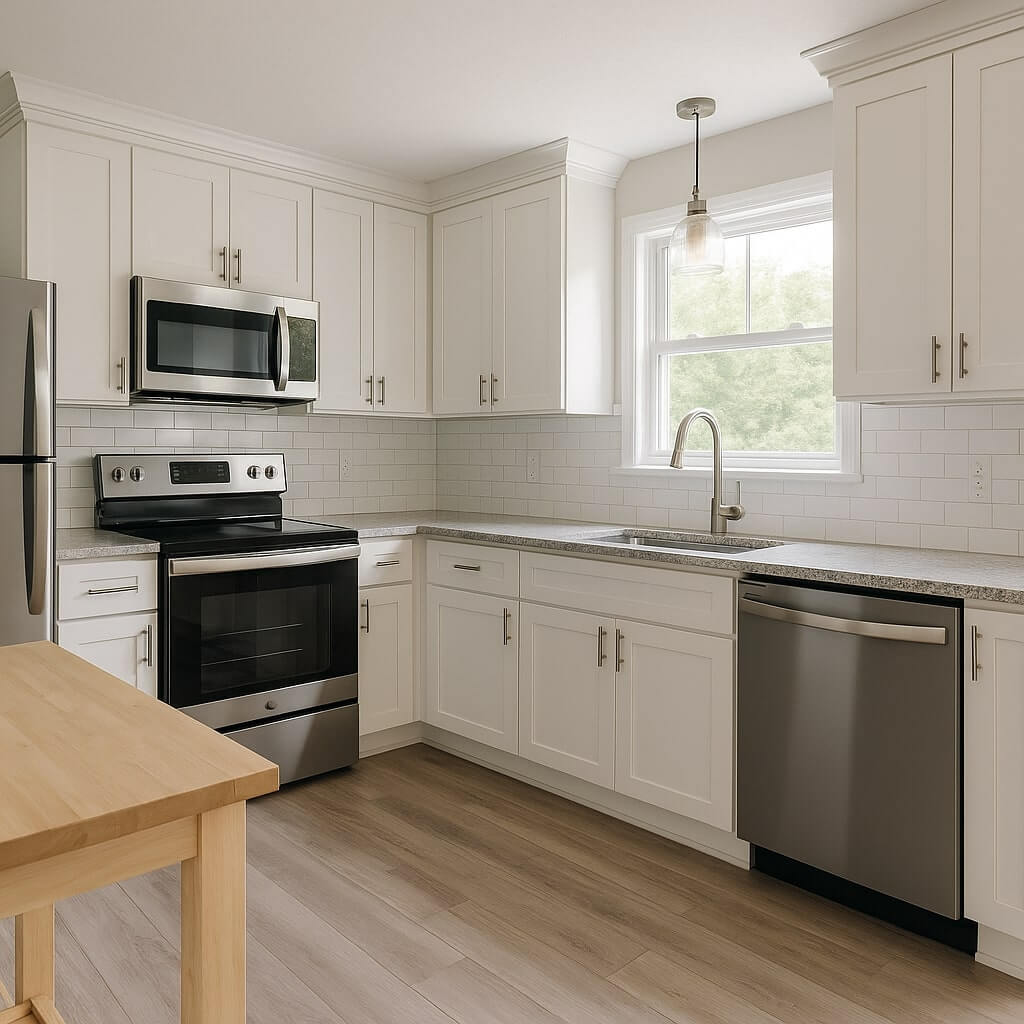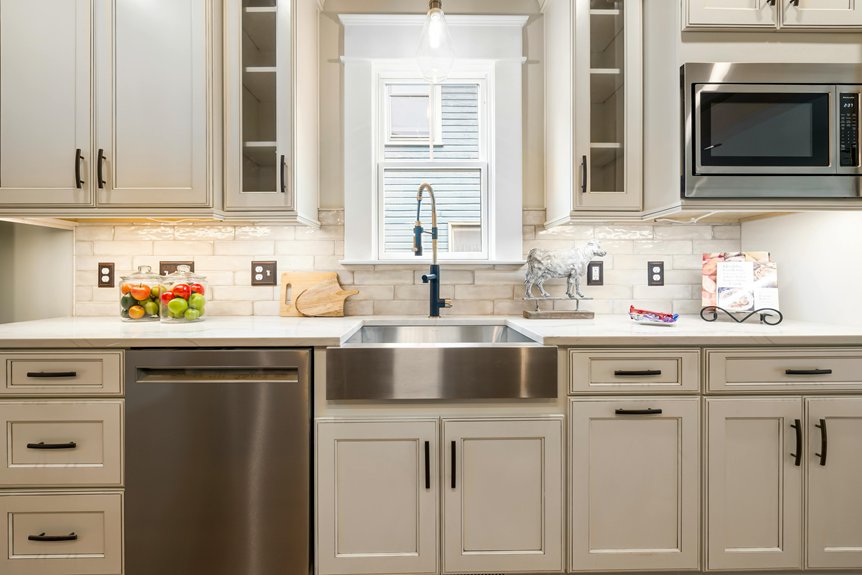When planning your kitchen remodel, it’s essential to factor in various electrical costs that can greatly impact your budget. From upgrading the electrical panel to guarantee it meets modern demands, to installing new wiring for safety, each element plays an important role. Don’t overlook appliance hookups and lighting enhancements, as well as outlet reconfigurations that promote safety and usability. Understanding these costs will help you make informed decisions that align with your overall vision.
Key Takeaways
- Upgrading the electrical panel may cost more upfront but ensures safety and supports high-demand appliances in modern kitchens.
- New wiring installation is often necessary to accommodate increased amperage demands, adhering to safety codes and preventing potential hazards.
- Appliance hookups vary in cost based on kitchen layout complexity, with each appliance requiring specific electrical connections for optimal operation.
- Lighting enhancements, including ambient and task lighting, can significantly impact the overall budget and improve kitchen functionality and aesthetics.
- Outlet reconfigurations may involve adding new outlets or adjusting existing ones to ensure safety, convenience, and compliance with electrical codes.
Upgrading Electrical Panels
When you decide to remodel your kitchen, upgrading your electrical panel is often an essential step that can’t be overlooked.
A modern kitchen requires increased panel capacity to support new appliances and devices. If your current panel can’t handle the load, you’ll risk tripped circuit breakers and potential hazards.
Assess your needs; a 200-amp panel might be necessary for high-demand kitchens. Additionally, consider the number and type of circuit breakers you’ll require. Properly sized circuit breakers guarantee safety and efficiency, preventing overloads.
Assess your kitchen’s demands; a 200-amp panel and properly sized breakers ensure safety and efficiency.
Upgrading now can save you from costly electrical issues later, guaranteeing your kitchen runs smoothly and safely.
New Wiring Installation
Upgrading your electrical panel often leads to the need for new wiring installation to accommodate modern kitchen appliances and technology.
When planning your remodel, consider the circuit capacity required for devices like refrigerators, ovens, and dishwashers. Each appliance demands specific amperage, so it’s vital to guarantee your wiring can handle the load without overloading circuits.
Additionally, adhering to safety codes is paramount. They dictate minimum standards for wiring types, grounding, and installation practices.
Appliance Hookups
Proper appliance hookups are essential for guaranteeing your kitchen operates efficiently and safely. Each appliance type, whether it’s a refrigerator, dishwasher, or oven, requires specific electrical connections and power requirements.
You’ll need to account for installation costs associated with these hookups, which can vary considerably based on the complexity of your kitchen layout and existing wiring. For instance, a gas range requires both gas and electrical connections, while an electric range demands a dedicated circuit.
Planning these hookups meticulously minimizes future issues and guarantees compliance with local codes, ultimately enhancing your kitchen’s functionality and safety.
Lighting Enhancements
Although you may focus on appliances during a kitchen remodel, lighting enhancements play a critical role in both functionality and aesthetics.
To create a well-designed space, consider incorporating both ambient lighting and task lighting. Ambient lighting provides overall illumination, ensuring the kitchen feels welcoming and spacious. Meanwhile, task lighting is essential for specific areas, such as countertops and islands, where precision is key for meal prep.
Evaluate the electrical costs associated with installing dimmers, recessed lights, or under-cabinet fixtures to optimize your lighting scheme. This thoughtful approach will enhance usability while elevating your kitchen’s visual appeal.
Outlet Reconfigurations
When renovating your kitchen, ensuring adequate electrical outlets is essential for both safety and convenience. Proper outlet placement and understanding outlet types can greatly enhance functionality. You may need to take into account reconfiguring existing outlets or adding new ones to accommodate appliances and gadgets.
Here’s a quick reference table for outlet types:
| Outlet Type | Purpose | Common Locations |
|---|---|---|
| Standard | General use | Walls, countertops |
| GFCI | Moisture-prone areas | Near sinks |
| USB | Device charging | Walls, countertops |
| 240V | High-power appliances | Ovens, dryers |
| Smart | Automation and control | Throughout the kitchen |
Evaluate your needs before finalizing configurations.
Conclusion
In summary, addressing these five electrical costs during your kitchen remodel is essential for ensuring safety, functionality, and efficiency. Upgrading your electrical panel, installing new wiring, planning appliance hookups, enhancing lighting, and reconfiguring outlets all contribute to a well-designed space that meets modern demands. By prioritizing these elements, you not only comply with electrical codes but also create a kitchen that supports your lifestyle and enhances your home’s value. Don’t overlook these critical aspects in your planning process.




